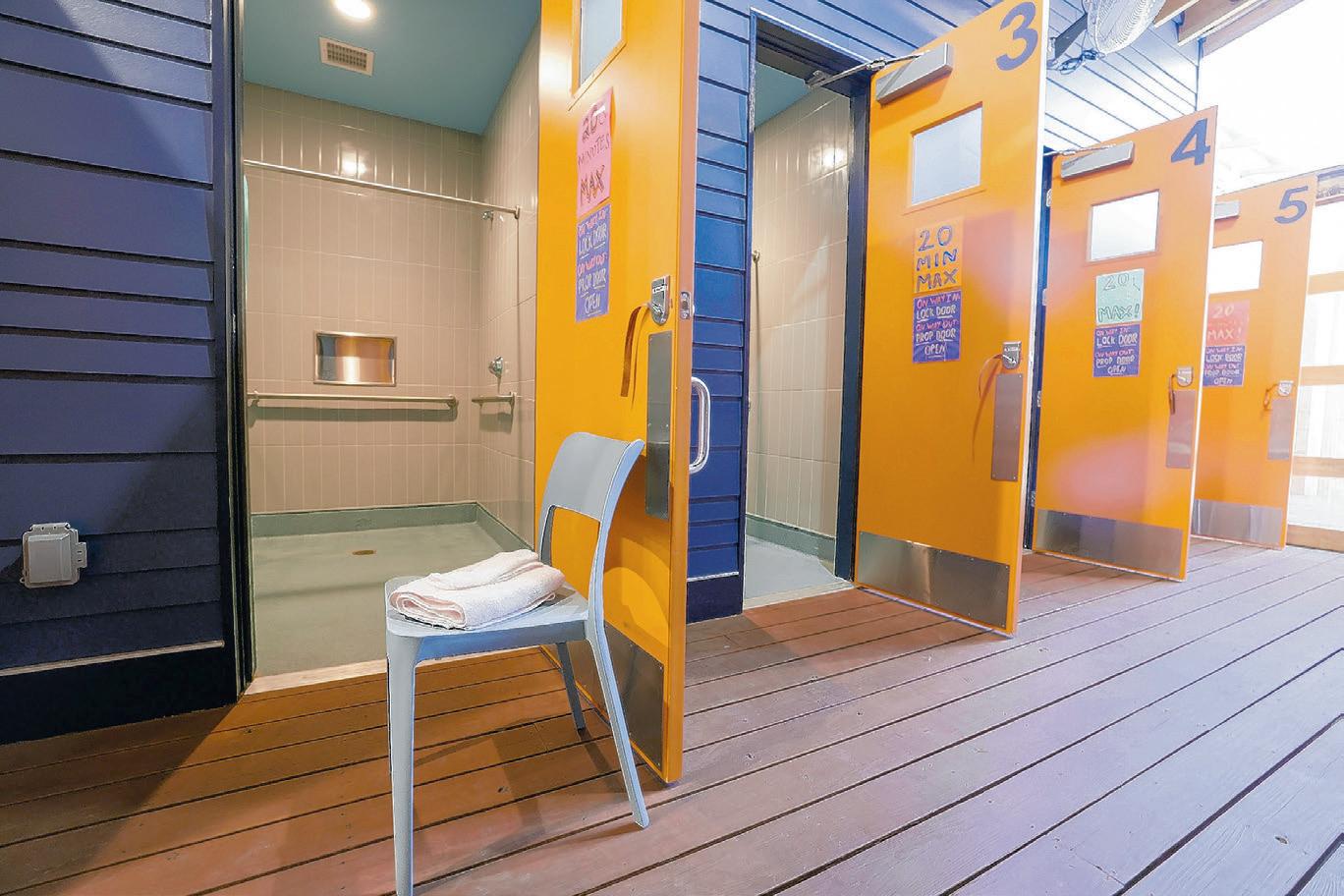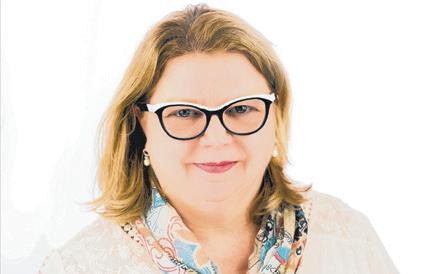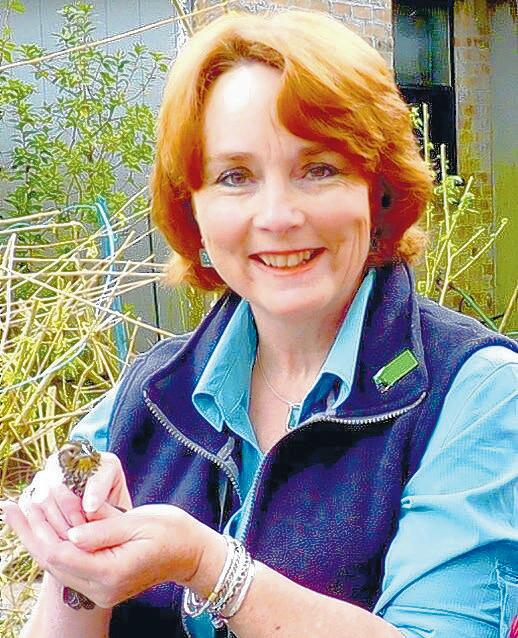If you would no longer like to receive
please email


If you would no longer like to receive
please email

Harry Tompson Center expands day shelter for the needy and unhoused
BY STEPHANIE RIEGEL Staff writer
Like many cities, New Orleans has struggled to address its homelessness crisis in a way that is both compassionate and effective.
While there are no easy solutions, a day shelter on the edge of the Central Business District, the Harry Tompson Center, is showing the way, providing its “guests” with clean showers, private bathrooms, device charging stations and other vital services to help them find a permanent home.
Over the past few years, the Harry Tompson Center has helped about 150 individuals a year, on average, qualify for housing — a monthslong process that involves assessment, handholding, paperwork, medical screenings and behavioral health counseling. The center helps hundreds more each year ready themselves for that process.
But that’s just a fraction of the more than 17,000 mostly men and some women who avail themselves of the center’s hygiene services. The Harry Tompson Center sees hygiene as a gateway to greater care, so the real way to measure its effectiveness is by the number of folks who go there to take a shower.
“If you are standing around waiting for a shower one of our housing case navigators can come around and talk to you and begin to have that initial conversation,” said Paisleigh Kelley, the center’s communications director “It opens the door.”
Now, the Harry Tompson Center is opening that door even wider with an expanded facility that will make hygiene services more accessible — and, staffers hope, more enjoyable thereby enabling the organization to serve more people.
In early March, the center cut the ribbon on an expanded hygiene area with 10 showers, six private bathrooms and twice as many sinks as before, 18 in all, with hot water The new space also has a laundry facility where a staffer will wash guests’ clothes, and a larger, better-lit common area.
The facility is not only more spacious but also more functional.
“It’s a better utilization of space that is beautiful and will help us better fulfill our mission,” said the center’s Executive Director Emily Wain
The $2.1 million project marked the first phase of a total $3.6 million overhaul of the center Phase two, now underway, includes the build-out of three medical treatment rooms, four counseling/case management rooms, three private phone booths and new administrative offices.

The new space is scheduled to be completed in late fall.
“This will enable us to really kick things up a notch and do an even better job for those we serve,” said Wain.
“We’re hoping to expand our medical services from two days a week to five.”
Beautiful collaboration
The Harry Tompson Center was founded in the late 1990s by the late Rev Harry Tompson, a popular Jesuit pastor and high school administrator in New Orleans, who also founded Café Reconcile and The Good Shepherd School.
It began when Tompson started offering snacks and other assistance to needy people at the community center building next to his church, Immaculate Conception on Baronne Street. After Tompson’s death in 2001 volunteers took over the organization and officially incorporated it as a 501(c)(3) a few years later
In 2007, as the city began rebuilding after Katrina, the center moved to its present location in the parking lot behind St. Joseph’s Catholic Church on Tulane Avenue. It partnered with the pastor of St. Joseph’s and with Lantern Light Ministries, another local nonprofit that serves the homeless, to create what is known as Rebuild.
In the nearly two decades since, Rebuild has evolved into a partnership of four organizations, each working independently yet collaboratively to care for the homeless and needy in distinct and complementary ways.
The Harry Tompson Center provides hygiene and other basic services to help stabilize guests and prepare them for housing.
Lantern Light serves breakfast and lunch daily It also provides regular mail service and helps people secure state ID cards — two critically important services to those living on the streets and seeking jobs or housing.
DePaul USA, which joined Rebuild in 2012, places guests in housing and
works to keep them housed, trying to ensure they get the type of support they need once they’ve moved into an apartment.
St. Joseph’s, the fourth partner in Rebuild, makes the property in its parking lot available for free.
“It’s really a beautiful collaboration,” Wain said. “It’s a partnership in the true sense of the word and we all really work well together, even while staying in our own lanes.”
‘In it together’
Wain came to New Orleans from St. Louis in 2004 as a member of the Jesuit Volunteer Corps, a service program for young adults. Her placement as a JV was with the Harry Tompson Center, back when it was operating from the space on Baronne Street.
“I thought I would stay a year or two and then figure out what to do with my life,” she said.
More than two decades later, she’s firmly entrenched in New Orleans, with a husband and two children, and has built her career at the Harry Tompson Center In 2020, weeks into the COVID pandemic, she was tapped to succeed longtime executive director, Vicki Judice, who still volunteers at the center and serves on its board.
“It’s hard to capture in words how special this place is,” Wain said “Even in the hard times, I’m surrounded by amazing people, guests, staff, volunteers. We’re in it together.”
Her days at the center are unpredictable, crazy and rewarding. Of late, she’s been preoccupied with keeping services running as smoothly as possible amid the din of buzz saws and hammers, making sure last-minute glitches — dryers that aren’t heating quite enough, erratic water pressure — are resolved.
She also stays busy coordinating with
ä See SHELTER, page 3G

At 30,000 ft, embarrassment has an upside
When asked, “What was the most embarrassing thing you’ve ever experienced?,” I have a clear answer
A bit of background is required:
In preparation for the 2009 Congrès Mondial Acadien, which was set to take place in New Brunswick, Canada, organizers invited a group of Louisiana journalists to make the trip up north for a week of festivities in 2008.
The goal was for us to tell the people back home about the big event coming up. Hopefully, lots of Broussards, Poches, Landrys, Heberts and all the rest of the people with Acadian in Louisiana would make the trip to connect with long-lost cousins and get in touch with their roots.
At the time, I lived in Lafayette and had two daughters who were 11 and 7. It was the week school was starting — an exhausting time for parents with school-age children. The lists of things to buy and send to school with them is long.
All in all, life was busy and full.
Before we left, I barely had a chance to look at the list of names of people who were going on the trip and realize that I didn’t know a single soul. They had chartered a bus for us to drive from Lafayette through Baton Rouge to pick up more folks and then make our way to the airport in New Orleans.
We left extra early on a hot August morning. I am not a morning person and realized as I was running out the door at 5 a.m., with my favorite pillow in hand, that I had forgotten a few things. This was before airlines did their best to force people to do carryon only We were all checking our bags. After all the traveling I had done, I had a personal policy of things I always took with me on the plane.
I ran back in the house and grabbed the short list of mandatory items I had forgotten and stuck them in my pillowcase, which I’ve done on many occasions.
We made it to the grocery store parking lot and met the others from Acadiana going on the trip. I boarded the bus and unsuccessfully began to try to take a nap on our way to the airport. As planned, we stopped in Baton Rouge and picked up some television journalists. David D’Aquin, who grew up in Lafayette, was among that crew
By the time we all boarded the plane, I was so tired. I stuck my pillow in the overhead compartment and took my aisle seat, waiting for the time the little bell would ding and I could finally take a long nap. All of the rest of the group, about 20 people, were seated behind me — including various television anchors and a bevy of newspaper reporters. When the little bell dinged, I stood up, grabbed my pillow and promptly began to go to sleep.
About 10 minutes later, someone tapped me on my left shoulder, which was to the aisle. I was incredulous. Why would someone deliberately wake me up when I was clearly sleeping? I turned around and could see that the entire group’s eyes were on me. D’Aquin, who worked for NBC33 and Fox 44 in Baton Rouge, had tapped my shoulder
He was sitting across the aisle, a row behind me. When I turned toward him, he leaned forward and pointed toward the center of the aisle between us. He then whispered/ yelled over the engines and said, “You dropped something.” I looked down to the airplane aisle, with a sinking feeling of
BY JOY HOLDEN Staff writer
Jane Patterson, the president and education chair of the Baton Rouge Audubon Society, started her birding odyssey in 2005 when she spotted a bird in her backyard that she didn’t know The discovery set her on a 20-year path of birding and birding education. After taking classes at LSU, joining and then becoming president of the Baton Rouge Audubon Society, Patterson is a go-to source for birding information. Her passion goes beyond spotting birds and extends to teaching others about the intricacies of different species and the keys to successful bird-watching. She teaches birding classes in the spring and the fall at the LSU Hilltop Arboretum. To date, she has taught more than 700 people in her birding classes at Hilltop Arboretum. She shares her hummingbird wisdom here.
What was the initial draw for you to become interested in birding?
I was a gardener before I was a birder Twenty years ago, about this month, I had a bird feeder in our yard. I had my first digital camera, and I was taking pictures of birds in my yard when I found a bird that I wasn’t familiar with.
I tried to use my husband’s 1974 Field Guide to figure out what bird it was. It was a pain to figure it out, but I finally did it. According to the little map in the book, I had a rare bird in my yard. Because I’m a geek, I went to the internet, and this was before Google. I prowled around and discovered that the bird was a house finch, and it would have been a rare bird in 1974, but the house finch has expanded its range across all of North America, so it wasn’t rare in 2005.
In that process, I started learning about Louisiana, and I discovered that LSU is an ornithological treasure, and Louisiana is an

amazing place for birds. I started doing basic birding classes at Hilltop. This was even before I was with the Audubon Society, just to share my excitement with other people. I was also seeing that kids were migrating more and more indoors, and not playing outside, not in touch with nature. I thought that birds would get kids interested in the outdoors, so I started a bird club for kids.
In the summer months, what should people do to prepare for hummingbirds?
After May, people may ask, “Where are my hummingbirds?” Well, they’re busy nesting if they’re still here. The best thing to do when it’s really hot is take your feeders down so you don’t have to maintain them. Instead, you may want to add some plants to your garden, so the birds can use those flowers.
In the fall, when nesting starts winding down, you’ll notice an uptick in August, and it peaks in mid-late September as they’re moving back through on their way to Mexico and Costa Rica again. Through the Louisiana Birding Observatory’s banding program, we know it takes a ruby-throated hummingbird two days to fly from Baton Rouge to Costa Rica, which is pretty amazing.
Can people still see ruby-throated hummingbirds in south Louisiana in late April?
The ruby-throated hummingbird — which is the only hum-
mingbird that breeds in the east-
ern U.S. and winters in southern Mexico and Central America starts returning to the Baton Rouge area in early to midMarch. Some do stay here all summer and breed, but many more of them are just passing through on their way north. Some of them head all the way into Canada, and they won’t get there until the early part of May.
There are still some coming in and coming through, so we see this uptick in our feeders in April and early May, and then that tapers off. During the breeding season, unless you are in a territory where the hummingbirds are breeding, you may not see them for most of May, June and July How should people arrange their feeders to attract hummingbirds?
The most important thing about a feeder is making sure you have one that can be cleaned thoroughly, because one of the things that people don’t do is change the nectar often enough They tend to hang it out there, and it gets really gross, which can actually make the hummingbird sick. You want a feeder that can open up completely so you can clean all the nooks and crannies. During the spring, cleaning and replacing the nectar every three to four days is fine. I have a video on our YouTube, Baton Rouge Audubon channel,

Jane Patterson, president and education chair of the Baton Rouge Audubon Society, started birding 19 years ago as an offshoot of gardening and now spends her time hosting educational events and birdwatching classes in the community
on hummingbirds and winter hummingbirds. Secondly, you don’t want any yellow parts on the hummingbird feeder because yellow attracts bees and wasps. They don’t hurt the hummingbirds, but they’re pigs, and they’ll drink it all.
Third, you don’t want to use any red dye in the nectar You just want to make your own with sugar and water Don’t use any commercial dyes because you’re trying to simulate Mother Nature, and she makes the container red, but doesn’t make the nectar red. Is there anything else you want people to know about hummingbirds? We do get different hummingbirds in the winter time, particu-
larly in the Baton Rouge area It’s very possible to get other species of hummingbirds in the colder months.
Hummingbirds have an amazing spatial memory If they find food opportunities as they travel north, they very often will go to those same locations to check if there’s food there. People have described that when they look out and there’s a hummingbird hovering out where they had a feeder last year, and that’s their cue to get their feeder out.
For more information, visit braudubon.org.
Email Joy Holden at joy.holden@ theadvocate.com.








We use theincrediblepowerofour audience to executeadvertisingand marketingcampaigns with aclear mindset –results. If we don’t achieve results, we don’t keep ourclients.

You’relucky to have onegreat brand. Thankstoacommitment to Louisiana anda commitment to local, we have several.
Andgreat brands bringgreat readers
163MILLION TOT AL USERS
810,000 PR INT READERS
We’re committed to long-termsuccess when manyofour peersare retreating. Ittakes innovation andinitiativeacross all our platforms andall ourteams. We’reherefor apurpose. Forour readers. Forour clients.For Louisiana.